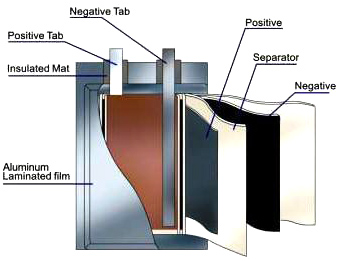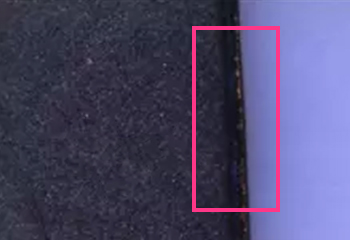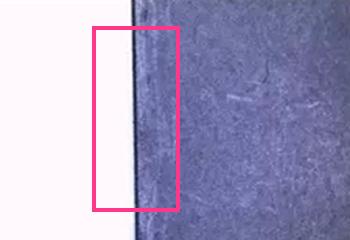Research for ultrafast fiber laser cutting lithium-ion battery electrodes
Lithium-ion battery has two electrodes, positive electrode and negative electrode. In order to improve the consistency between the density and thickness of the surface material of the battery electrodes, the positive and negative electrodes have to go through the rolling technology after the coating procedure.
At present, the industrial market generally employs the aluminum foil for the positive electrode and copper foil for the negative electrode of the lithium-ion battery.  The thickness of the aluminum foil at the positive electrode is mostly around 20μm while the thickness of the copper foil at the negative electrode is around 12 μm. Both the aluminum foil and the copper foil have a painting layer of about 100 μm at their two surfaces respectively. The traditional processing mean of the electrodes of the lithium-ion battery is to use the die-cutting machine, slitting machine and other conventional processing equipment. Such traditional processing mean will wear the equipment in processing. Therefore, the cutting die has to be exchanged regularly. As a result, the processing cost is relatively high. Meanwhile, the batter electrodes might appear roll rim, unsmooth cutting surface, burr and other product defects. Currently, there have been a kind of electrode cutter of nanosecond fiber laser, which can solve the above-mentioned quality problems. Because laser cutting is non-contact cutting, it will reduce the cost of the consumables greatly and improve the processing efficiency. It is recognizing by the battery manufacturers gradually. However, since the electrode is made of composite materials, it is usually named as the "sandwich" material. The nanosecond laser cutting belongs to hot working. The electrodes cut by the nanosecond laser cutting machine might generate the phenomenon of contractive coating. The middle electrode layer in the cutting part might have naked condition. As the enlarging capacity of the power battery, the requirements to the battery electrodes are also becoming higher. Such a product defect will bring potential safety hazard to the products.
The thickness of the aluminum foil at the positive electrode is mostly around 20μm while the thickness of the copper foil at the negative electrode is around 12 μm. Both the aluminum foil and the copper foil have a painting layer of about 100 μm at their two surfaces respectively. The traditional processing mean of the electrodes of the lithium-ion battery is to use the die-cutting machine, slitting machine and other conventional processing equipment. Such traditional processing mean will wear the equipment in processing. Therefore, the cutting die has to be exchanged regularly. As a result, the processing cost is relatively high. Meanwhile, the batter electrodes might appear roll rim, unsmooth cutting surface, burr and other product defects. Currently, there have been a kind of electrode cutter of nanosecond fiber laser, which can solve the above-mentioned quality problems. Because laser cutting is non-contact cutting, it will reduce the cost of the consumables greatly and improve the processing efficiency. It is recognizing by the battery manufacturers gradually. However, since the electrode is made of composite materials, it is usually named as the "sandwich" material. The nanosecond laser cutting belongs to hot working. The electrodes cut by the nanosecond laser cutting machine might generate the phenomenon of contractive coating. The middle electrode layer in the cutting part might have naked condition. As the enlarging capacity of the power battery, the requirements to the battery electrodes are also becoming higher. Such a product defect will bring potential safety hazard to the products.
There is a contrast test for ultrafast fiber laser cutting battery electrode according to the customer request.
I. Requirement of processing technology:
- Carry out complete cutting according to the pattern required by the customer.
- The cutting edge has to burr, fallen powder and other problems (the burr and dust are easily to impale the membrane, or break through the membrane in charging or discharging, so as to result in the inner short circuit of the internal battery, heating to cause high temperature and even explosion and other problems).
- The cutting edge will not expose the interbedded metal of the battery electrodes. The leaked metal will cause short circuit of the battery.
- Provide a maximum cutting efficiency for the customers to evaluate the production capacity(150mm/s).
II. The processing contrast test between the nanosecond fiber laser and picosecond fiber laser
Pic. 1 Sample of the electrode cutting by nanosecond fiber laser
Pic. 2 Sample of the electrode cutting by picosecond fiber laser
With the same processing parameters, the nanosecond laser and the picosecond laser are used to process the same electrodes. From the above contrast pictures, we can discover obviously that the edge processed by the nanosecond laser has fallen powder and exposes the interbedded metal, which will cause short circuit of the battery easily. In addition, the cutting edge has seriously burned black. Then the fracture surface of the electrode will have a certain burr and splash phenomena. However, the edge processed by the picosecond laser has no fallen powder, no leaked interbedded metal. Furthermore, its edge is clean, smooth and burr-free. This is the difference of the nanosecond laser and the picosecond laser in processing the material of the electrode. It is also a processing case which can be solved by the picosecond laser but not the nanosecond laser. From the above process test contrast, it can be concluded that the nanosecond fiber laser has a bigger processing thermal influence to the soft materials like the battery electrode. Its laser beam is easy to cause big damage to the processing area and the surrounding area in processing. However, the picosecond fiber laser will bring fewer damages to the close areas in processing. It is feasible to employ the picosecond fiber laser to replace the traditional processing mean and the nanosecond laser in processing the electrode of the lithium-ion battery. Moreover, according to the feedback of the customers with practical industrial production lines, the result and efficiency of this technological research deserve to be affirmed and generalized. Meanwhile, because the picosecond fiber laser has a relatively low cost and sales price, if it is used to replace the nanosecond fiber laser, the equipment cost will not be increased greatly. It has solved the problem of the cutting quality of the electrode and it is easy to be accepted by the final customers.

